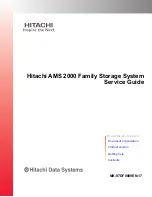
TimeIPS Server Overview
The primary functions of the TimeIPS server include:
•
Gathering punches from network clocks, remote clocking and telephone
clocking modules
•
Storing time and attendance data
•
Processing data, including time worked, schedules, jobs, alerts, etc.
•
Providing an easy to access web-based reporting and management interface
TimeIPS network clocks are used for walk-up clocking and are connected via
Ethernet. Additionally, optional TimeIPS telephone clocking modules can be used
for call-in clocking.
Network Requirements
A standard RJ-45 Ethernet network cable connects TimeIPS to your network. The
TimeIPS server is accessed by its IP address on your network. To make access easy
and to prevent unexpected IP address changes, the TimeIPS server should be
configured with a static IP address on your LAN. Additional network clocks can be
set to static IP addresses, or can be dynamically addressed with DHCP. Network
clocks send a broadcast packet to look for a server on the same subnet. Clocks on
different networks or subnets will need to be manually configured (this is done
through the menu or by visiting http://<IP address of the clock>).
Network Ports Used By TimeIPS
The following ports are used by TimeIPS to access the Internet (if available) for the
reasons described below:
80 (HTTP) Software update downloads
25 (SMTP) Email reports and messages
53 (DNS) Name resolution
123 (NTP) Time synchronization
443 (TimeIPS) Software update and backup authorization
Note: These are standard outgoing ports used by TimeIPS (not port forwards).
Please visit http://support.timeips.com for additional network and port information.
TimeIPS
http://support.timeips.com 316.264.1600
Page 5


































